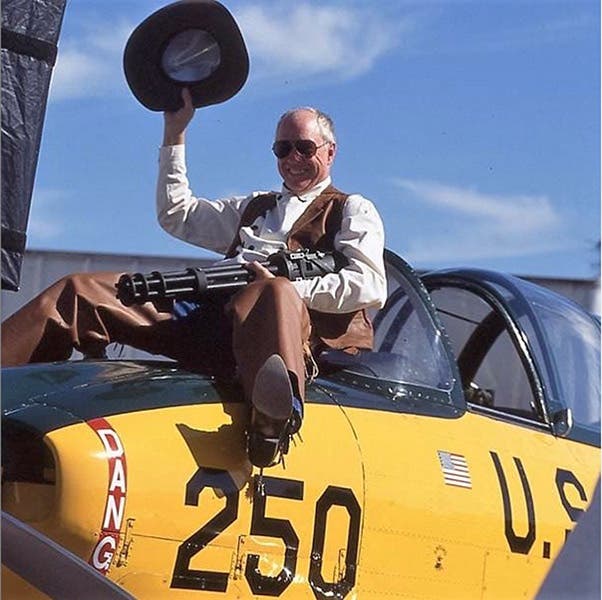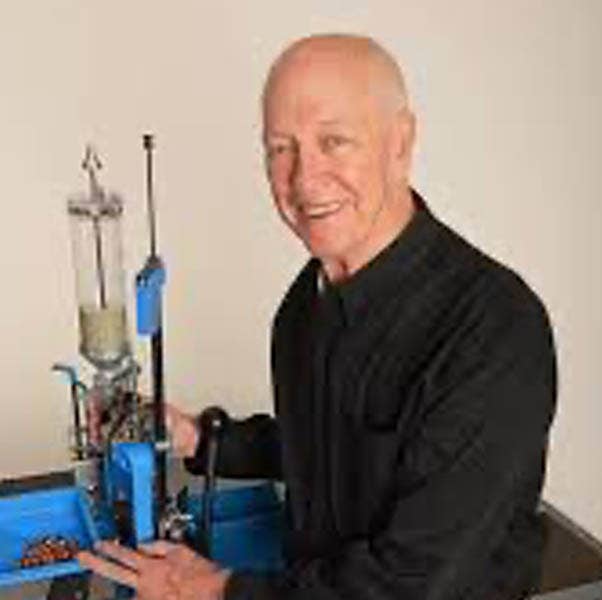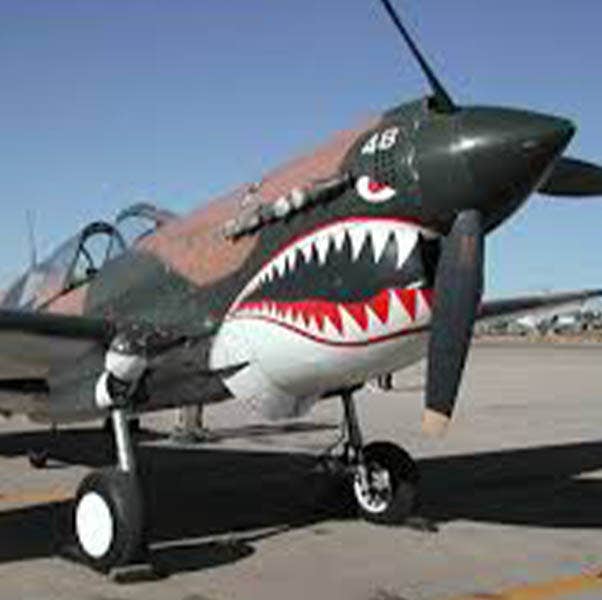THE HISTORY OF DILLON PRECISION
The highly irregular and somewhat improbable story of how Dillon Precision got started in the reoading business as told by our founder, Mike Dillon.
BY MIKE DILLON (1935-2016)
I got into the reloading equipment business purely by accident. It started when a friend of mine died in an airplane crash – MY airplane. A few other friends of his and I spent four or five months closing up his machine shop business and selling off all the tools for his widow. When we were finished, she said, “I guess I owe you an airplane.” I answered, “No you don’t. I didn’t lend it to you. I lent it to your husband. That was between him and me. But I WOULD like his Thompson submachine gun.” The Tommy gun came with a star loading tool, so I became a progressive reloader.
Shortly thereafter, I bought an M-16, and wanted to load .223 ammo progressively, but Star said it wasn’t possible to do it with their tool. They said, “If you want to try it, we’ll sell you a .380 shellplate and you can try to make it work.” So I went to a machinist and cut down an RCBS die, ground the hardcoat off of the outside and had him thread it to the weird thread size that Star dies used and I made the damn thing work. I changed the link-arms to give it a little more stroke and came up with a kit so my friends could convert their machines.
My friend Peter Kokalis was ridiculing me and sarcastically suggested marketing my kit as the “Superstar Conversion,” which I did. Maybe 100 or so kits were sold, but soon people started asking me for a conversion to load .30-06 rifle ammunition on the Star machine. That’s when I decided to make my own reloader. The RL-1000 was the first full-fledged Dillon Precision product. Manufacture started out in my garage, then we moved into a small shop. We started the company on a $30,000 loan against our house.
Our first hobby-level progressive loader – The RL-300 – was a major learning experience. We built maybe 900 or 1000 of them, and lost about $100 on each one. This led to the RL-450, a less expensive machine to produce, and one that got the attention of the “big guys” in the reloading industry. By 1984, both Hornady and RCBS either had introduced or were preparing to introduce their own progressive reloaders, and they were much stronger than us in the distributor market. I wasn’t going to fight their fight. All good fighter pilots know that you don’t fight the other guy’s fight. Instead, I went into direct marketing. This was a go-for-broke thing. I spent every dollar I could raise on advertising. We had to sell 500 machines that month to pay for all the advertising we had purchased – we sold 5000.
Our rapid growth in the reloading industry coincided with the growth spurt in action pistol shooting. This sport required the expenditure of mass quantities of ammunition, and we offered the equipment to allow shooters to affordably do so. I shot with Robbie Leatham when he was a kid and by the mid-80s I saw the chance to sponsor two shooters who were going to get us some publicity without spending lots of money that we didn’t have. Dillon Precision became Rob’s and Brian Enos’ first corporate sponsor – we gave them the components to load their ammunition and helped them with match fees and other expenses. For a while, we also had a contingency sponsorship program for shooting events. We gave a thousand dollars to any major match winner who used ammunition loaded on Dillon presses. In time, virtually everybody who won a match did it using Dillon-loaded ammunition.
Our products have thrived for several reasons. First, I run the company based on my philosophy. You treat other people the way you want to be treated. I don’t want people calling me up saying, “You miserable S.O.B., you sold me this machine and now you won’t help me.” I don’t want anyone mad at me. This is reflected in our warranty. No warranty cards, registration or serial numbers are necessary. Whether you are the first owner, or the seventeenth, all our hobby-level reloading machines have a lifetime warranty. If you break, damage or wear out anything on them, it will be fixed or replaced – whatever is necessary to restore the machine to normal operating condition. If a minor part is all that is needed, contact us and we will ship the part. (International customers pay the return shipping costs, as well as any associated brokerage fees, taxes or other government imposed costs ) If something major is damaged or broken,contact us and we issue the customer a return merchandise authorization-RMA- to return the item to us for repair. The customer pays the shipping; we fix or replace as is warranted. Only the Super 1050 and Big Fifty Reloader have a one-year warranty, as do all electrical/electronic products and textiles. The warranty does not cover damage due to misuse or acts of nature.However we have programs in place to assist customers in the event of a natural disaster. Rifle depriming pins and carbide expander balls are a consumable item, and not warrantied. Our customers understand that they have a best friend at our factory. We are only a phone call, FAX or E-mail away. In return we receive an incredible amount of customer loyalty.








Another reason Dillon reloading equipment does so well is because we are in constant contact with our customer base. We are constantly hearing from our customers. No one else in this industry gets the degree of field feedback that we do, because of our direct sales and our warranty. Several product improvements and new product ideas have come from our customers. Additionally, virtually all of our employees are shooters and reloaders. We literally have hundreds of years of widely varying reloading experience available in-house. We are never stagnant. We’re always testing design changes, constantly seeking improvements. The speed of change in the firearms industry will not allow you to rest on your laurels.
In order to serve our international customers, we’ve made several appropriate design changes. Most of our equipment requiring power is now available in 220 volt, 50hz. The casefeeder for the RL550B/XL 650/Super 1050, both the CV-500 and the CV-2001 vibratory case cleaners and the electric primer tube fillers are available in 220-volt European versions. In conjunction with a major European arms manufacturer we have added many primarily European calibers to the list of caliber conversion kits available for the RL 550B and the XL 650.
Besides playing with firearms and reloading equipment, one of the other loves of my life is flying. I always had that young boy’s fascination for airplanes, but didn’t think I could fly because I had a kidney removed when I was a child. Finally, at the age of 23, I found out that the FAA doesn’t discriminate against you for lacking a kidney. When I was in college I decided I needed to learn how to operate some piece of machinery, and get paid a lot of money for doing so. I went to school in Texas, and every day I passed the airport, seeing airplanes take off and land. So I decided to learn how to fly. I washed airplanes during the day and learned to fly them at night. I soon got my commercial license and my instructor’s license. I taught flying for about a year, then lied my way into a cropdusting job in Arizona because nobody would hire me unless I had experience.
I have always had an interest in warbirds, both fixed and rotary wing. My first warbird was a P-40 I bought as scrap from another cropduster. It had a bad engine, so he was selling it as scrap. I paid eight hundred dollars for it. It took a long time to restore, and I almost sold it several times just to get out from under it. When I was finally finished, I flew it cross-country. I thought the main satisfaction would be from the act of restoration, but I discovered that the airplane was a real thrill to fly.
My latest restoration project is a Huey UH-1H helicopter. It was built in 1967, and may have seen use in Southeast Asia. I bought it after it was retired from a National Guard unit. It had one-half hour of flying time left on it. We pushed it into the hanger and proceeded to remove everything. We rewired, rebuilt, repainted or replaced EVERYTHING on that helicopter. After it was finished, a good friend of mine, ’Slick’ Aguirre, taught me how to fly it. ‘Slick’ flew Hueys in Vietnam, where the birds were nicknamed “slicks.” After Vietnam, Slick used his G.I. Bill benefits to go to college, then joined the Air Force and learned to fly jet fighters for a living. Anyway, with Slick’s help, I qualified to fly the Huey in about one week.
At Dillon Precision, our future plans are to build upon the foundation of innovation and improvement in our product line. We have implemented several design improvements to current machines, all of which may be retrofitted to previous versions. The Square Deal B now has machined brass link arm bearings. This gives tighter tolerances and greater rigidity than the molded Delrin bearings used previously. Another change is the innovative “lock-link” bellcrank for the powder measures on all machines. This design requires no return springs on the powder bars, and prevents the powder bar from returning until the platform is lowered to the at-rest position. This virtually eliminates ANY chance of an accidental double charge on the auto indexing machines. This design update will fit most older powder measures.
In a longer view, Dillon is working on several other projects. Most we will keep under our hat, but one interesting project is that we are now manufacturing an improved 7.62 NATO mini-gun. This is available to US State Department approved governments only, but it’s interesting that a company that traditionally provides progressive loading equipment is now involved with improving progressive UN-loading equipment.
A TRIBUTE TO MIKE DILLON
Presented by NRA Executive Vice President and Chief Executive Officer Wayne LaPierre
